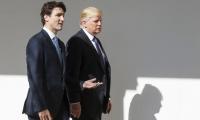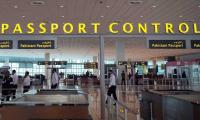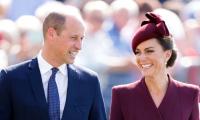The leading political parties – PML-N, PPP, PTI – and smaller religious and ethnic parties have moved into the election mode of politics. This is at least a year ahead of time. Parties are flexing their muscles just in case the Supreme Court of Pakistan decides to take action in the Panama case, and the political stakeholders are required to prepare for elections.
The foremost election strategy seems to be to get the support of potential winners from various localities, especially from outside one’s traditional political stronghold. Thus, the PML-N has been fishing in Sindh and Khyber Pakhtunkhwa, the PPP in Punjab and KP, and the PTI in Sindh and Punjab. The focus of the election strategy of these parties is the electability of candidates whatever their past political affiliations have been. Some of them are indeed old stalwarts of the same party, and who had deflected to the King’s party under Musharraf. Others are disgruntled politicians from the rival party who fear they will be denied the party ticket for the next elections. A whole array of politicians, ranging from Liaquat Jatoi to Faisal Saleh Hayat to Nabeel Gabol, is up for the picking. Party loyalty is at a discount as far as this strategy is concerned.
A second strategy is negative campaigning. Usually, opposition parties have a lot of material to show that the incumbent governments in Islamabad, Lahore, Karachi and Peshawar have not delivered. There is a schedule of scores of issues that remain unresolved for seven decades, including corruption, bad governance, nepotism, non-fulfilment of the promised agenda, poverty, unemployment and a bad law and order situation. You pick up some of these and lash the incumbent governments with them. This strategy operates at the gross expense of the protagonists’ own policy framework. Nobody among the stalwarts of the PTI or PPP is willing to offer a policy that will sell well, or that will be the identity of the party.
The PML-N has generally dwelled on its macro-level activities such as the large infrastructural projects sold out in the name of ‘development’, at the cost of increased vulnerability of the economy. However, its real strength lies in patronage politics at least as much as in the case of the PPP and PTI. The MQM Pakistan (MQM-P) is clamouring for its lack of patronage capability in the absence of municipal powers. With neither policy nor patronage at its disposal, this party will be hard pressed to dwell on Mohajir identity in the elections. For now, however, it is struggling to keep the major part of its traditional vote in its fold in the face of the Altaf Hussain group operating from London and the PSP operating from Karachi.
The third election strategy is the use of the court as a political resource. The two leading litigants against their respective political rivals – the PTI and the PML-N – have dealt a severe blow to each other. The Panama case has shattered the image of the invincibility of the PML-N. The latter has now put the PTI leadership in a corner on the issue of the loss of its (the PTI’s) money trail vis-à-vis foreign funding. This reflects on the classic maxim: people who live in glass houses shouldn’t throw stones at others. Other parties are shying away from going the court’s way and burning their fingers.
Going to the street is usually the default option for political parties in Pakistan. Imran Khan leads this kind of strategy through mass rallies. His party’s main purpose has been to keep itself in the public eye. However, there has been no report of the rallies increasing his electoral following. Recently, Nawaz Sharif too turned to public rallies as a show of force. This was ill-advised, especially as he opted out of his typically serene mode of speech and raised his voice to match the voice of his opponent. At the other end, the PSP’s (non) million march remained a reckless attempt to convince the Mohajirs that the party’s fate was not sealed as yet.
The JUI-F’s mammoth gathering to commemorate its hundredth anniversary was essentially a religious event. Its political dividends remain limited for the polls. The JI’s mini-rallies reflect its loss of space in urban Sindh. The ANP’s public meeting in Karachi last week was a routine matter and no game changer by any stretch of imagination.
Under these circumstances, the PPP has chosen to keep a low profile and operate from behind the scenes. It might have learnt from others’ experience that street politics is a colossal waste of money, energy and time and gets you no political gain in electoral terms.
Meanwhile, contrary to the agenda of the establishment and a large part of the middle class to eliminate dynastic politics from Pakistan, both the Sharifs and the Zardaris will lead their respective parties into the election arena next year. While the generational transition within the two families has been expected, and in Bilawal’s case was actually put in action, no change on that count is on the horizon. Ayub’s military government brought about a transition in the political generation that brought Mujibur Rehman, Z A Bhutto and Wali Khan, among others, in the 1970 elections. Zia’s martial law led to the emergence of the generation of Benazir and Nawaz Sharif, along with Maulana Fazlur Rehman and others.
However, the Musharraf government was followed by a gigantic comeback of Nawaz Sharif and Zardari. Indeed, they will again be there in 2018 – almost 30 years after Nawaz Sharif and Benazir Bhutto first emerged as leaders on the political scene. However, the two dynasties may suffer implosion from within after the elections. The Bilawal option did not take off. So, the father took over again, at least for the forthcoming elections. Maryam Nawaz has no exposure to the world of politics – dominated by men – and was hardly prepared by her father for a leadership role. The mini-dynasty of Shahbaz Sharif has been kept in check for any generational ambitions. The future of dynastic politics after the 2018 elections is unpredictable.
Pakistan is going to experience the non-policy-non-ideology elections that have been the norm in recent decades. The incumbency factor seems to favour the PML-N. The PTI leadership has spent its energies on the street and in the court, bypassing constituency work. The PPP has returned to the political stage at the federal level quite late in the day, and moving out of Sindh is a great challenge for the party. For the MQM, the question is whether it can move from a one-into-three phenomenon to a three-into-one model to represent the Mohajir community at the provincial and federal levels. Meanwhile, KP presents a scene of volatility and confusion. With the PTI leadership largely focused on Punjab and then Sindh, KP is run by a secondary leadership that has nothing to boast of.
The most optimistic view of the current politics is that it is operating within the constitutional setup by way of parliamentary proceedings and performance of governments in federal and provincial capitals, despite public meetings and litigation. While political parties are crying hoarse for change, they are all pro-status quo. For now, the ‘system’ promises to remain intact, barring unforeseen interjection from outside.
The writer is a professor at LUMS.
To take part in revolution, farmers need resources to afford seed varieties, fertilisers, and cost of setting up tube...
Pakistan remains burdened by insufficient financial support, saddled with conditions that deepen dependency
Government implements key policy decisions aimed at stabilising the economy
This is not going to be feel-good, year-end piece where I will use motivational quotes to tell how resilient we are
State Bank overlook considerable challenges surrounding Pakistan's economy
Pakistan remains mired in what can only be described as a ‘Baby Boomer Syndrome’







